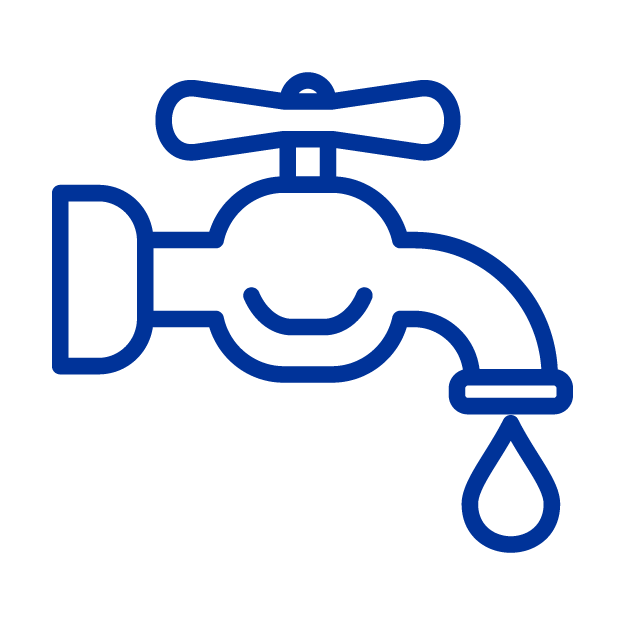PFAS IN DRINKING WATER
Home / PFAS Matrices / Drinking Water
PACE® HELPS WATER PROFESSIONALS ACROSS THE COUNTRY REMAIN COMPLIANT WITH EPA AND STATE DRINKING WATER REGULATIONS.
Webinar | Navigating PFAS in Drinking Water: Treatability & Analytical Overview
Understanding how to effectively treat PFAS in drinking water has never been more critical. In this upcoming webinar, we’ll explore the complexities of PFAS treatability and analytical testing, providing environmental consultants, municipalities, and other industry professionals with the insights needed to navigate evolving regulatory requirements.
PFAS TREATABILITY STUDIES
Pace® PFAS Treatability Studies help clients evaluate the effectiveness of technologies and strategies for PFAS removal, remediation, and destruction. By conducting a Treatability Study, environmental engineers and scientists can optimize remediation strategies, ensure regulatory compliance, and build public trust.
THE EPA TARGETS PFAS
On April 10, 2024, the agency announced the first-ever enforceable limits for six PFAS: PFOA, PFOS, PFBS, PFNA, PFHxS, and GenX (HFPO-DA). CWS (Community Water Systems) have three years from the date of publication in the Federal register to complete their initial monitoring and five years to address contamination beyond the allowable limits.
FILLING IN THE KNOWLEDGE GAPS
Not much is known about the toxicity of the vast majority of PFAS compounds, but the U.S. EPA is seeking to fill in some of the gaps with toxicity assessments focused on PFAS of particular concern as well as those that represent specific categories of PFAS compounds. These assessments inform rulemaking, such as health advisories and limit-setting at both the state and federal level. As of Q1, 2024, toxicity assessments have been completed for PFOA, PFOS, GenX (HFPO-DA), PFBS, PFBA, PFDA, and PFHxA. These assessments can be found on the EPA’s Integrated Risk Information System (IRIS) database.
STATE REGULATORY LANDSCAPE FOR PFAS IN DRINKING WATER
States are allowed to issue their own limits for PFAS in drinking water, provided these limits are equal to or lower than the limits set by the EPA under the Safe Drinking Water Act. States may also set limits on PFAS not covered under the National Primary Drinking Water Regulation (NPDWR) limits. To date, at least 30 states have set or proposed some sort of limit on PFAS in drinking water.
UCMR 5
The EPA’s Fifth Unregulated Contaminant Monitoring Rule (UCMR 5) requires all public water systems serving more than 3300 customers and a randomly selected group of 800 small systems to begin sampling in 2023 for 29 PFAS plus lithium. The data will be combined with data from other EPA programs and made publicly available through the EPA’s new PFAS Analytical Tools.
Pace® is an approved UCMR 5 lab and offers all three methods required to test for the 29 PFAS plus lithium.
Reach out to us for project planning assistance or to request a quote.
PRIMARY PFAS DRINKING WATER TEST METHODS
The EPA has two validated methods for analyzing PFAS in drinking water that can be used for compliance. In addition to being an approved UCMR 5 lab, Pace® maintains drinking water certifications in every state with a required lab-accreditation program.
TESTING DRINKING WATER SOURCES
PFAS can directly enter a water system through ground and surface water sources that contain PFAS. These sources, in turn, can become contaminated through a number of other routes such as wastewater, biosolids, landfill leachate, and more. Visit our individual matrices pages to learn more about how PFAS spreads throughout the environment and appropriate test methods to use for each matrix.
PFAS MATTERS
Stay up to date on PFAS in the news and get opinions from Pace® PFAS experts by subscribing you our blog: PFAS Matters.
REASONS TO CHOOSE PACE®

EXPERIENCED
Pace® has been an industry leader in persistent organic pollutant testing for over three decades.
CERTIFIED
We’re certified/accredited by NELAC, ISO, DOD, DOE, and in every state with a PFAS lab certification program.

RELIABLE
For emergencies, our Rapid Response Team can provide defensible results in as little as 24 hours.

COMMITTED
We are committed to helping our customers advance their important work through building strong relationships, delivering upon expectations, and providing exceptional customer service.

ADVANCED
We can test for PFAS in both solid and aqueous matrices, including potable and non-potable waters, soils, and biota.

INNOVATIVE
We’re on the leading edge of science, working with EPA, DOD, ASTM, and others to develop new methods for analyzing PFAS.






